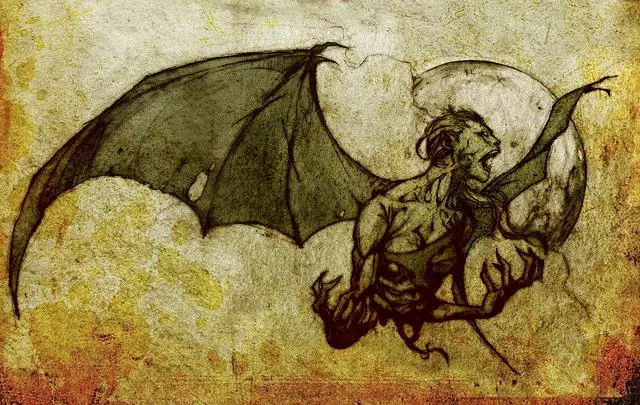Share the Lore!
By: Alex Postrado
The Philippine Lore Counterpart of Vampires, Werewolves, Ghouls, and Witches
At the forefront of all petrifying creatures in Philippine folklore, stands the aswang.
An all-too-familiar monster that has been sending Filipinos running for centuries now.
The subject of a vast assortment of stories, artworks, and films, the aswang has — time and time again — claimed its seat as one of the most formidable folkloric concepts to ever be told in Southeast Asia.
If you think vampires, werewolves, ghouls, and witches were scary, try taking on a monstrous combination of them!
By all accounts, there is no question why Filipino dark fantasy comic Trese, along with its recently released Netflix adaptation of the same name, has included aswangs in its daring narrative.
However, it is not just Philippine pop culture that aswangs widely took over.
Customs and traditions were also altered — one way or another — to suit the belief in this well-known monster.
The reason why traditional Filipinos never sweep floors in wakes and funerals, and the culprit for the ever-present red charms worn by a lot of Filipino children — here is the haunting lore of the aswang.
What is an Aswang?
The first recorded mention of the aswang can be found in an excerpt from Spanish missionary Juan de Plasencia’s 16th-century work, Customs of the Tagalogs.
In there, the word aswang — spelled as osuang — meant “sorcerer“.
Over the years, though, the name started to appear in various texts, most of which point to different meanings.
For one, the word aswang was thought to be derived from Sanskrit asura — meaning, “demon” — a notion that was introduced by Isabelo de Los Reyes in his 1909 book, La Religión Antigua de Los Filipinos.
Others, however, like to think that it originated from Filipino aso — meaning, “dog” — or asu-asuan — meaning, “the likeness of a dog”.
Because of these conflicting interpretations, aswang eventually evolved into what folklore authority Maximo Ramos described as “an aggregate term for a multitude of Filipino supernatural creatures“.
These creatures can be divided into five main classes: the bloodsuckers, the ghouls, the witches, the werebeasts, and the viscera suckers.

In spite of all these classes under the Aswang umbrella term — as well as the aswang, not having a consistent image — most folklorists still agree on at least three things:
The aswang’s main diet consists of liver, intestines, and human blood; it typically hunts for victims at night; and it preys upon corpses, sick or old people, pregnant women, and children — especially the unborn — among others.
Some people also believe that aswangs — generally — have a fear of light.
For this reason, ensuring wakes were brightly lit was necessary to keep the wicked creature from paying a visit to steal the corpse and devour it.
In most stories, being an aswang runs in the bloodline.
If someone came from a family of aswangs, then it is highly likely that they would also inherit the curse of savagely craving raw human meat.
The process of becoming an aswang includes passing a black chick from the mouth of the dying aswang to that of its immediate heir.
Until that ritual is successfully performed, the elder aswang cannot naturally die.
In that case, to avoid “perpetually hovering between life and death“, the aswang can find someone else to pass the curse to, even if they don’t belong to the clan — which is, perhaps, another reason to avoid aswangs at all costs.
Repelling the Evil Aswang
Because aswangs have different types — therefore, having varying appearances and lifestyles — no one can truly be prepared for their attack.
To make matters worse, most — if not all — aswangs are accomplished shapeshifters.
They can easily disguise themselves as humans or as animals in the blink of an eye.
Fortunately, there are still a few telltale signs that can help people single out aswangs from real humans.
First, aswangs allegedly don’t have philtrums.
Moreover, while they can quickly hide their true nature in the shape of animals, they can’t perfectly copy them — resulting in the replica having no tail.
And lastly, if your reflection appears upside down in someone’s eyes, they are said to certainly be aswangs of some kind.
Now, they say that prevention is better than cure, and so, trying to avoid aswangs would be a practical choice of action.
But what if the aswang, itself, does not want to avoid you?
After all, they are known to be vicious killers for no other reason than their insatiable craving.
Well, there are still countermeasures you could take.
One is to concoct a special oil mixture that should be hung at the front door of your house.
When an aswang draws near, the oil will boil — letting you know of the approaching danger.
Second, be wary of other indications that an aswang is nearby.
You may hear scratching noises coming from the roof or the ominous call of its usual companion, the Tiktik.
Third, know the tools that can drive away this shapeshifting monster.
Garlic and other spices, ash, vinegar, large crustaceans, agimats or charms, holy objects, prayers, buntot pagi or the tail of a stingray, and even urine are all listed as effective protections against aswangs.
Finally, if all defenses are lost, gear up with sharp sticks or bolos and strike the aswang from the back.
It is crucial to do it this way since it is believed that aswangs can immediately heal themselves of any wound just by licking it.
Types of Aswang
The bloodsuckers — also called vampire aswangs — are the first on the list.
Stories about them are common in Bicol, Cebu, much of Visayas, as well as parts of the Ilocos region.
They are said to disguise themselves as beautiful women in hopes of finding a human husband.
This is their way of infiltrating communities with a cover that would allow them to ultimately drain people’s blood without suspicion.
The second class of aswang is composed of the ghouls — said to inhabit most of the Philippines.
They are commonly depicted as humanoid monsters with an appetite for corpses and carrion.
Because of their diet, they are believed to reek of decay. Though, for them, it is likely an enticing aroma — more or less — as they would still try to follow the pungent smell of corpses no matter where it takes them.
That is why, traditionally, Filipinos don’t sweep floors during wakes.
It is believed that doing that would spread the smell of the dead further — making it all the more impossible to keep ghoul-like aswangs at bay.
If they fail, good luck seeing the dead loved one again.
Chances are, these ghouls — also known in some places as bal-bal — have already switched the corpse with a banana trunk right after consumption.
The next type is the witches — common in Bicol, Cebu, and Eastern Visayas.
This class of aswang is said to be extremely vindictive.
Often living in the outskirts of towns, they are usually avoided by people even when it is known that they are indeed species of aswang.
And the reason for this is because most people are afraid of the horrors and curses they might end up with after confronting a witch.
Werebeasts make up the fourth kind of aswang.
They are prominent in Bicol, Cebu, Western Visayas, and other areas of Luzon.
Werebeasts are the master shapeshifters of the aswang family.
They can take the form of a cat, a pig, a cow, other animals, but, most of the time, a dog.
Interestingly, unlike the other aswangs that creep into communities through marriage, werebeasts disguise themselves as travelers or newcomers in town by day.
The viscera suckers or manananggals complete the list of aswang species and they are said to be lurking around Luzon — especially in Bicol.

They self-segment and fly around villages — hunting for pregnant women — with only the upper part of their body.
Exploring the Roots of the Aswang Myth
There exists innumerable theories about the real origins of the aswang lore.
Some say that it was created by Spanish conquistadors during the 16th century as propaganda to anathemize babaylans — or ancient female shamans — and introduce Christianity as the salvation from the evil aswangs.
Meanwhile, others — like historian Anthony Lim — regard the Malay’s migration to the Philippines during the 13th century as the reason for the existence of the aswang myth.
It is noted that Malaysian folklore has a creature called penanggal and a lot of the elements of its story seem to match that of the aswang.
Moreover, the notoriety of the aswang lore can be traced back to the World War II era, when the Central Intelligence Agency of the U.S. — headed by Edward Lansdale — declared psychological warfare among members of the Philippine guerilla group, Hukbalahap, by piling the mangled bodies of the group’s members by roadsides at night — with holes in their necks, punctured to resemble aswang bites.
But, of course, it is still possible that even before all of that happened, the aswang already existed in the pre-colonial Philippines, living in oral traditions and superstitions — perhaps, to explain natural phenomena and human realities that were considered enigmatic at the time.
Nonetheless, the aswang remains a centerpiece of Philippine folk belief and culture.
With a name that is more than just a catch-all term for most malevolent Filipino monsters and with a story that is more than just a single fragment of the perennial Filipino identity.
References:
Aswang - Mythology Aswang: The Terrifying Vampire Ghouls Of The Philippines What Is An Aswang? Etymology Of Aswang: Where Did The Word Come From? A Compendium Of Creatures From Philippine Folklore & Mythology Aswang: Grim Filipino Folk Creature With A Real-Life Counterpart How The Cia Used The Aswang To Win A War In The Philippines
